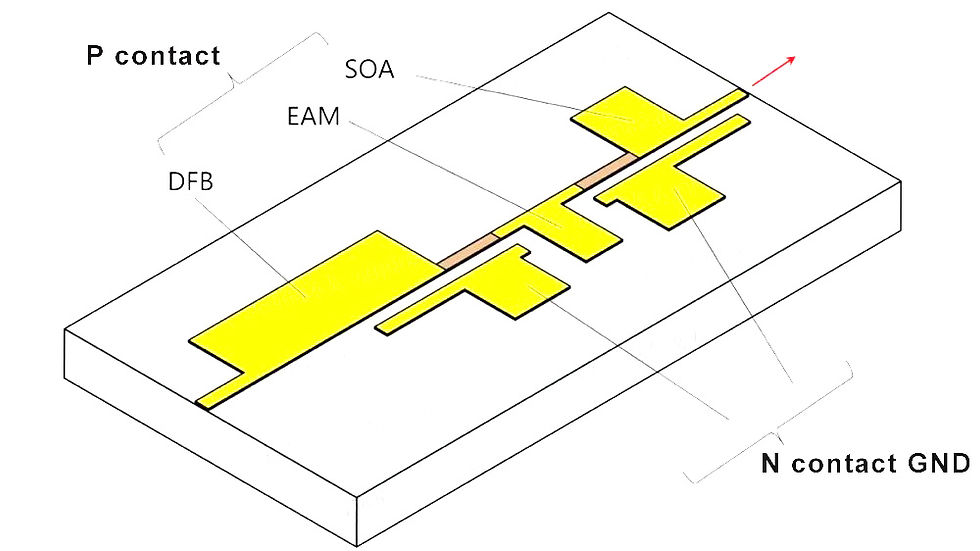EML chip packaging for NTT Flip Chip
- forrest86
- May 10, 2023
- 2 min read
Most EML packages use gold wire bonding, and some use steps to reduce the length of gold wires, such as Huawei, Lumentum, etc., to increase bandwidth. Some of them use gold wires in parallel to reduce parasitic inductance and improve bandwidth, such as Broadcom. These have been written in too many articles in the collection, so I won't go into details. In this year's OFC, another company mentioned that NTT's Flip Chip flip-chip EML in 2021 can reduce the equivalent length of the gold wire to about 75 μm, further improving the bandwidth.
For this detail of NTT, some technical disclosures were made in early 2023. Write it down, the DFB electrodes of EML, the electro-absorption signal electrodes, if there is SOA, the electrodes of SOA, these are P-type semiconductor contacts, and traditional EML uses N-type For the substrate, many companies also choose N-type bottom electrodes, and NTT chooses N-electrode surface deposition. On the one hand, Flip Chip requires GSG to be on one plane. On the other hand, it can increase some bandwidth.
EML adopts the SI-BH structure, and pages 106-110 of Collection 2021 are the process flow of this structure. P-type surface electrode and N-type surface electrode, the cross section is as follows.


In the package of EML, the signal of GSG is provided through a transition substrate. The height of the substrate is consistent with the height of the chip of EML, and then covers the solder termination resistor board.

Make the resistor board transparent, EA connects the EML to the transition substrate by terminating the surface wiring of the resistor board, and then uses a thin film resistor to place between the signal electrode of the EA and GND.

Terminate the resistor board, turn it over

EA electroabsorption region length, usually <100μm in 200G EML. In the design of 200G EML in the past two years, if surface N electrodes are used, the bandwidth can be further improved.

When the length of the electroabsorption region is 75 μm, the bandwidth curve is shown below. The N electrode on the bottom surface oscillates at around 90 GHz, and the bandwidth decreases. Using surface N electrodes, the bandwidth is greater than 90GHz, which can be used for single-wave 200G PAM4 modulation.





コメント